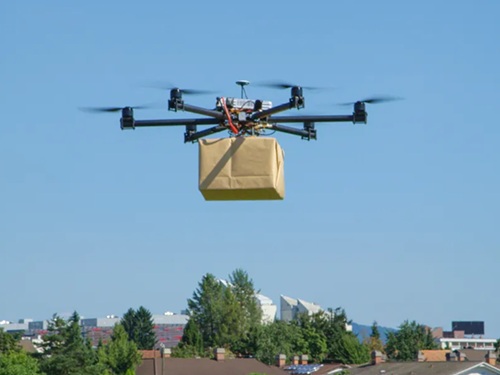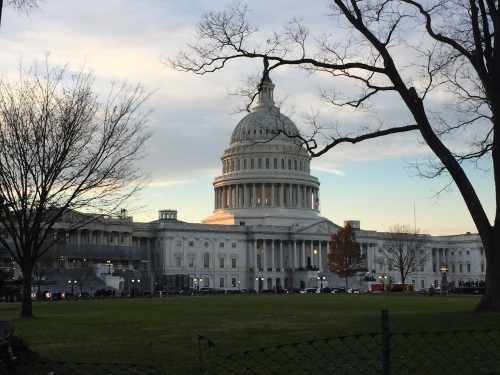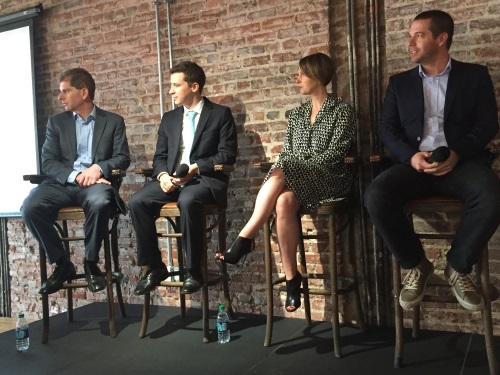Road signs that incorporate barcodes so onboard vehicle systems can “read” the information they contain; sensor data that insurance companies can analyze in order to fine-tune premiums based on vehicle and driver behavior; a transportation industry “based more on electrons than anything else.”
[Above left to right: Bryan Reimer, MIT; Finch Fulton, USDOT; Jessica Nigro, Daimler; Gil Dotan Guardian Optical Technologies.]
Those were just some of the issues touched on during a panel discussion organized by the U.S.-Israel Future Mobility Center on May 7 in Washington D.C. to examine the opportunities and challenges being offered via advanced automotive technologies – everything from advanced driver assistance systems or ADAS such as blind spot monitoring, forward collision warning, and lane keeping technology, to fully autonomous vehicles.

“It is a sobering reality that this technology is more complicated than we thought it would be five to seven years ago,” noted Jessica Nigro, general manager and head of technology and innovation policy at Daimler North America Corp. “There are not enough cars yet on the road with such technology and getting people familiarized with the technology that will be in their hands is critical. We need to focus more about teaching consumers at the [vehicle] purchase point what their responsibilities are in terms of operating them.”
Bryan Reimer, a research scientist with the Massachusetts Institute for Technology’s Center for Transportation and Logistics, stressed that adding more automation to vehicles “means adding more complexity,” which is why “getting the nomenclature correct” in terms of what partially- and fully-autonomous vehicle systems can and cannot do is so critical.
“We learn more from friends, family, and social interactions than experts,” he explained. “We’re moving to an industry more based on electrons than anything else, so the real ‘moment of truth’ is whether we as operators will be open to learning more.”

Finch Fulton, deputy assistant secretary for transportation policy at the U.S. Department of Transportation, discussed the importance of collecting more vehicle data.
“Data will help make these vehicles more acceptable to everyone and will help us get more people to use them,” he said. “That’s why we are absolutely committed to preserving the communication spectrum for transportation – we want to see it used and built out with connected vehicles.”
At the same time, Fulton emphasized that connected and autonomous vehicles or CAVs will need “good roads” in order to function most efficiently; a position Nigro echoed in her remarks.
“The ‘unsexy’ stuff is critical: clear road markings, fixing potholes, clear signs that human eyes can read but that include barcodes,” she said. “Those [signs] are farther away but that infrastructure piece is huge.”
Gil Dotan, president and founder of Guardian Optical Technologies, added that the data generated by CAVs will be critical and not only for helping “enhance the user experience” and improving vehicle safety.
“Sensors monitoring inside and outside the vehicle can provide interesting data to insurance companies,” he said. “That data can help them create more attractive [insurance] packages to end users based on the risk profile it helps develop.”
 Top Stories
Top Stories
AASHTO Comments on Proposed Drone Rules
October 10, 2025 Top Stories
Top Stories

